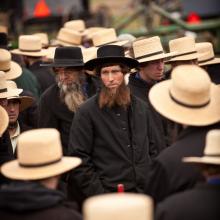cutting
ON A MILD morning in July 1997, a group of women gathered under the spreading arms of a great neem tree in the village of Malicounda Bambara in Senegal, West Africa. While children played nearby and others rested on their mothers' laps, a woman named Maimouna Traore spoke to the group.
Like most women in Malicounda Bambara, Traore had never gone to school as a child. Opportunities for education in villages like hers were scarce, especially for girls. But one year earlier, a program called Tostan (the word means "breakthrough" in the local Wolof language) had come to her village. The women enrolled in the Tostan program met three times a week, engaging in lessons on literacy and math, health and hygiene, problem-solving—and, most important of all, human rights.
Addressing her words to Molly Melching, Tostan's founder and the one American present among them, Traore said that, before the program, women in her community did not understand human rights. They did not know that, like men, they have the right to health and well-being, to speak their minds and offer their opinions. With their new understanding of these concepts came courage. They invited Melching because, after much thought and discussion, they had made an important collective decision: to end the practice of female genital cutting (FGC) in their community.
Melching was speechless. Rarely discussed openly, FGC, the complete or partial removal of female genitalia for non-medical reasons, is a long-held and deeply entrenched custom in many villages of Senegal, as well as in 27 other African nations. Known locally as "the women's tradition," it has been regarded as among the most critical moments in a girl's life, preparing her for marriage and making her a respected member of her community. To not cut one's daughter was unthinkable—setting her up for a lifetime of rejection and social isolation.
Law officers testified Wednesday about the chaotic and bizarre scene they discovered the night of Oct. 4, 2011, when they arrived at the Holmes County, Ohio, home of Raymond Hershberger, a 79-year-old Amish bishop.
The officers recalled that clumps of gray hair lay on a rocking chair and on the floor of the living room, and a crowd of people were crying and yelling in Pennsylvania Dutch, their first language.
Hershberger’s son, Levi, told the officers that "Some guys broke in and gave Grandpa a bad haircut," a Sheriff’s Department detective said.
The testimony opened the second week of the hate-crime trial of Amish bishop Samuel Mullet Sr. and 15 of his followers. They are accused of conspiracy and kidnapping in what prosecutors describe as hair-cutting attacks on nine religious enemies and estranged family members.
